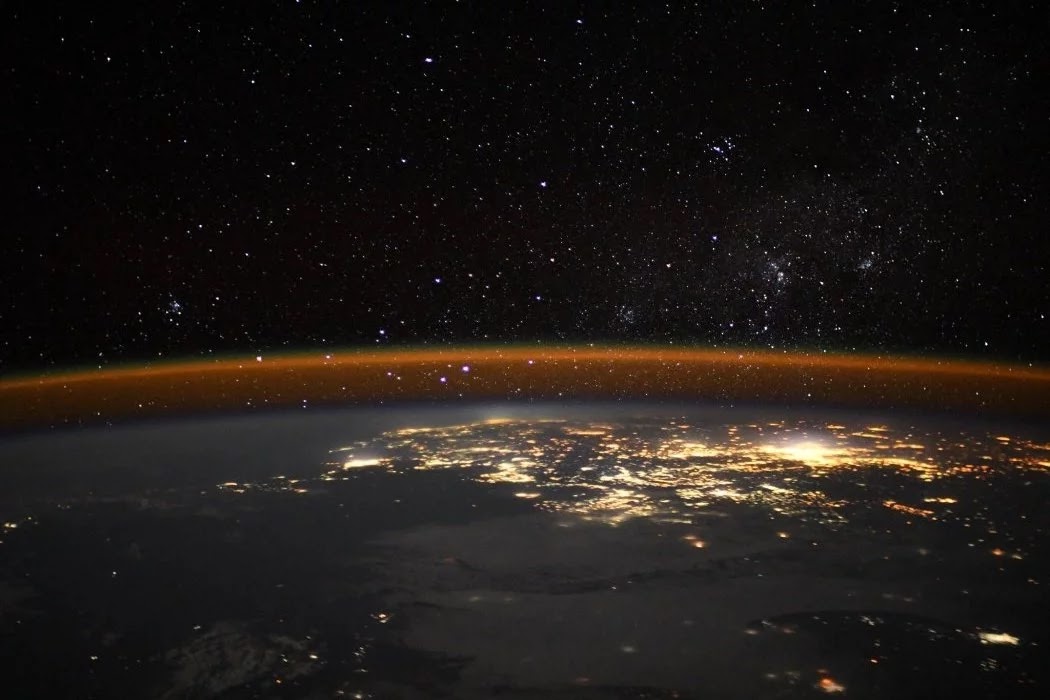
Photo: ESA/NASA - Thomas Pesquet
A European Space Agency (ESA) astronaut, Thomas Pesquet, has taken a stunning photograph capturing the mesmerising night side of our planet.
Taken from the International Space Station's (ISS) Cupola, Pesquet photographed Earth in the dark, manifesting a magnificent contrast between its luminous atmosphere and the night sky.
Pesquet wrote in a post on Flickr:
"A few night pictures from the Cupola: sometimes star lights battle it out with city lights for who's the brightest and more beautiful. I'm just lucky to get to be the judge."
The airglow captured in Pesquet's image is a phenomenon created by natural processes. Even if light pollution, starlight and diffuse sunlight were completely eliminated, the Earth's atmosphere would never be completely dark as it contains molecules that give out a glow on a range of wavelengths.
Specifically, the characteristic glow which is visible in the night sky, occurs as the molecules break apart due to the solar radiation the atmosphere is exposed to during the day. This process is called 'photoionization' and is essentially the release of excess photons in the atmosphere. The blue-green layer at the outer edge of the atmosphere is oxygen and nitrogen. The red-gold layer at the inner edge is called the 'sodium layer' and is where meteors break apart, releasing sodium into the atmosphere. The combination of sodium atoms and photoionization then produces a golden glow effect.

ESA/NASA - Thomas Pesquet
As the glow is quite subtle, capturing the glow effect can take some time. Pesquet explained:
"I've missed more than my share. You need a long shutter time (the shutter needs to stay open to take in as much light as possible, as the scene is very dark), so not only do you as a photographer have to stay extremely still holding the camera, but also the Space Station moves so fast that there will be some motion anyway… the intricacies of space photography!"
[h/t: science alert]












COMMENTS